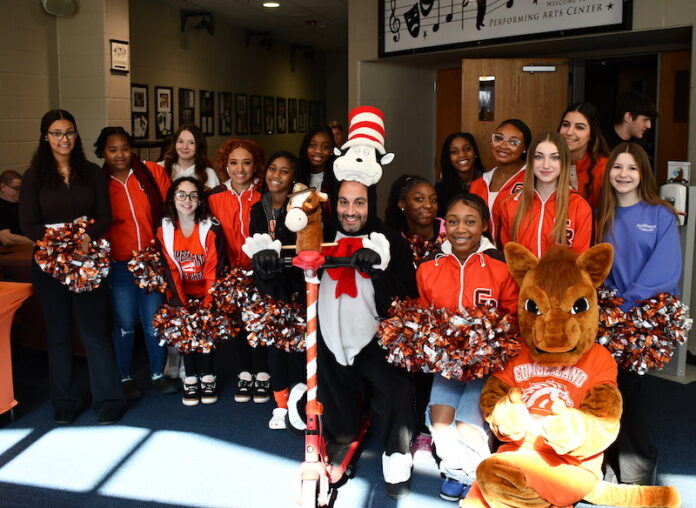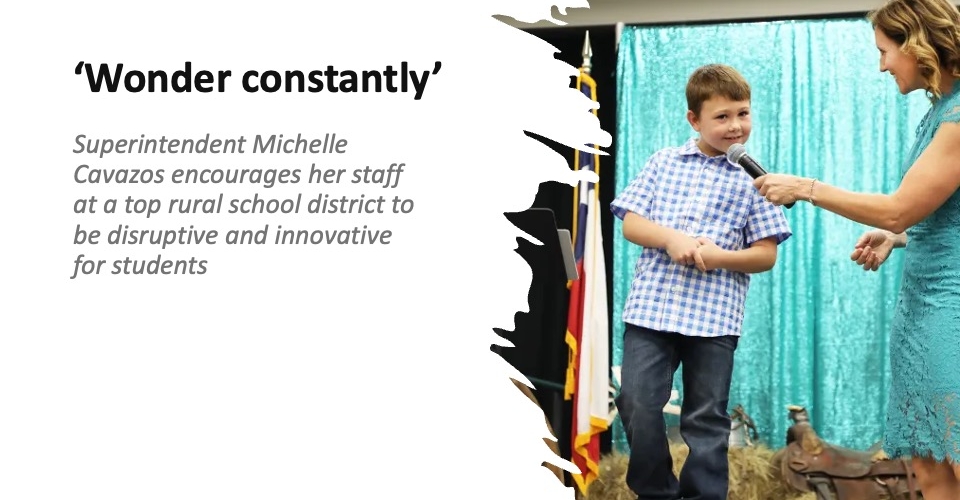Superintendent Carl Dolente knows two important things about promoting student success: Classroom relationships work and one-size-fits-all cookie-cutter approaches don’t. This is why the motto of the Cumberland Regional School District that he leads is “Creating connections to empower every student to be successful and fulfill their dreams.”
“Relationships within the classroom are essential to optimize student success on every level,” Dolente says. “When students feel connected to their teachers, administrators, counselors, and school community as a whole, they thrive and flourish both academically and emotionally.”
The current student success priority in Dolente’s New Jersey district centers on college and career preparation. The district operates an early college high school and seven different CTE academies that have most recently expanded into electrical and HVAC training. “We teach the importance of individuality, diversity, and being comfortable with who you are,” Dolente adds. “For students to realize their full potential, a variety of pathways must be available to them.”
Day-to-day student success
One of the biggest shifts in how K12 leaders approach student success is most evident in the evolving role of school counselors, who once focused mainly on getting the most at-risk students on track and helping graduating seniors get into college. “We haven’t shifted away from risk, we’ve shifted risk to include prevention,” says Mary Walsh, executive director of Boston College’s Center for Thriving Children, which recently released National Guidelines for Integrated Student Support. “We’ve shifted from a focus just on academics to include other aspects of childhood and adolescence.”
A key component of this big change is a commitment among K12 educators to expand opportunities for students, particularly those from socio-economically deprived areas who have been underresourced. Another shift is identifying each individual student’s strengths and needs, rather than lumping kids together based on academics or other factors, Walsh adds.
The guidelines are based, in part, on successful interventions developed by K12 leaders across the U.S. education system. “One of the most important things we learned is that the most effective approaches are built into the day-to-day operations of a school,” says Joan Wasser Gish, the Center for Thriving Children’s director of systemic impact who led development of the guidelines. “Educators are reviewing each and every student comprehensively and creating a plan that not only addresses a student’s needs but is about cultivating strengths and opportunities.”
The student success guidelines encourage district leaders to take stock of their current student support programs, build consensus around enhancing those programs and develop a budget to fund the changes. These steps should also include revamping staff roles and responsibilities to fortify a system of integrated student support. Finally, districts should also partner with community organizations to augment student success services and track data to determine which enrichment and intervention programs are most effective, Gish explains.
More from DA: Sudden departures leave 2 districts searching for their next superintendents
“We’re providing a roadmap of all the current practices that can be brought into alignment to drive the right resources to the right child at the right time,” Gish concludes.
Are you overlooking the arts?
The arts—from multimedia to music to theater—should be a central component of any district’s student success strategy, says Mary Dell’Erba, the assistant director of the Arts Education Partnership.
While students need support in developing their artistic skills, the arts can also be put into service of learning in math, English, science and other core subjects. Countless research has proven that students who are engaged in the arts perform better in academics, civic engagement and workforce outcomes, Dell’Erba points out.
The arts teach young people to process and express their emotions, to express what they’re going through and help them explore their own identities. When students take on a role in a drama or a musical, for example, it gives them an opportunity to step into another person’s perspective. Dance, which is often wordless, can actually help students develop their ability to communicate. These experiences can be the “hook” that keeps students engaged in other content areas, she says.
“For a lot of young people, what they’re doing in their art rooms is why they want to go to school,” Dell’Erba adds. “We should be making sure young people have a space where they feel safe to express themselves to try new things and to learn new skills that will serve them as artists and as people who live in a community.”
Administrators can also guide all of their teachers in integrating arts into subjects such as math, science and history. Music is a perfect match for educators who want to use the principles of rhythm to teach math concepts. Dance can support literacy by helping students communicate certain ideas even before they have the right words. “Arts education is education—it’s not something extra,” she says. “Embedding arts into other subjects advances learning in both areas.”
How about homework?
Here’s another area of student success where there is no “one-size-fits-all” answer when it comes to when or how much homework teachers should assign. There are some guidelines based on a student’s age and some other factors, says Harris Cooper, a Duke University professor emeritus who has researched homework extensively.
“Homework goes wrong when too much is assigned,” Cooper says. “It can also go wrong if parents don’t understand the objective of the assignments.”
Homework for younger children should be short and simple, lead to success, and show that things they enjoy doing at home are connected to what they’re learning at school. Communication is particularly important in the early grades so everyone is on the same page about the purpose of homework, how long it should take and when it should be completed.
As kids get older, particularly in high school, homework should guide them in integrating multiple subjects while also teaching skills like time management that help prepare college-bound students for the independent study demands of higher education. When it comes to workload for students in middle and high school, Cooper does encourage administrators to bring teachers of different subjects together to ensure students aren’t being assigned too much homework.
The type and scope of homework should be based on the stage of a student’s learning. For example, homework in a Spanish 1 class may feature heavy practice and repetition while higher-level science or history classes should require students to use inquiry, creativity and other cross-disciplinary skills to complete their assignments.
“Teachers and administrators should also be aware of the families that their school servicing,” Cooper adds. “There are differences in the demands that students have at home and differences in parental attitudes. It’s important to recognize whom you’re serving and remain in communication about what you’re doing and why.”










